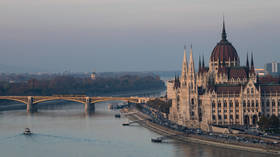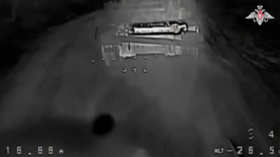FAA issues emergency directive to Boeing, warns corrosion on 737 aircraft could cause twin engine failure
The Federal Aviation Administration has issued an emergency directive, warning that some 2,000 Boeing 737 aircraft could be at risk of dual engine failure. The alert comes after a series of technical snafus for the Seattle firm.
In an Emergency Airworthiness Directive issued on Thursday, the Federal Aviation Administration (FAA) warned that air check valves on the narrow-body planes could become corroded and stuck open after seven days or more in storage. A stuck valve could result in power loss in both engines, “without the ability to restart,” the FAA cautioned.
Also on rt.com No one’s flying and MILLIONS of jobs might be lost – but airlines took billions, CEOs got rich and employees got screwed, againThe directive does not apply to Boeing’s 737 MAX aircraft, which have been grounded worldwide since last March after errant software and faulty sensors caused two planes to nosedive into the ground, killing 346 people. Instead, it affects 737 models ranging from 1984’s 737-400 to 2006’s 737-900ER. Around 2,000 of these planes have been in storage in the US since the coronavirus pandemic led to their being grounded.
Inspecting the valves is a simple matter of having an engineer jiggle a flap by hand and examining the surrounding area for cracks or fissures. Replacement is also a relatively simple procedure.
However, the corrosion alert is just another entry on a growing list of negative stories for Boeing. With the 737 MAX only recently flying its first certification flights since the grounding last March, pilots union spokesman Dennis Tajer told RT earlier this month that his “trust is broken with Boeing.” Pilots, he said, were outraged that the company didn’t tell them that the auto-levelling software that caused the two crashes couldn’t be overridden, and that they weren’t properly trained to fly the new jets. Instead, Boeing apparently skimmed over the new features in a short iPad course.
The cost-cutting went beyond keeping pilots in the dark about the software issues. Software design on the 737 MAX was outsourced to Indian tech firms who paid their workers $9 per hour, according to one Bloomberg report from last year. Boeing’s apparent penny-pinching stood in stark contrast to the company’s philosophy of old. During development of the wide-body 777 in the 1990s, for example, Boeing reportedly put its heads of software engineering on the first test flight. The decision paid off, as the engineers had to quickly reprogram the turbulence control software when the plane started shaking mid-flight.
Since then, various cost-saving measures have come back to haunt Boeing. Many components of the 787 Dreamliner – a wide-body airliner built to a tight budget – are supplied by subcontractors, with the planes assembled at a plant in South Carolina. Workers at this plant have complained of “shoddy production and weak oversight,” and whistleblowers have complained about everything from debris left on planes to higher-ups knowingly installing faulty oxygen systems.
Less than three weeks ago, the European Union Aviation Safety Agency (EASA) launched an investigation into cracks on the Boeing Dreamliner’s Rolls-Royce engines.
Also on rt.com Staying grounded or crashing and burning? The airline industry is facing the worst crisis in its historyAfter a dismal year for the Seattle-based constructor, cancelations continue to outstrip orders. Boeing reported last month that it’s only received 58 new orders this year, while 322 have been canceled and 338 are classed as “not firm enough” to proceed with. With the coronavirus still hampering air travel worldwide, the company also announced recently that it will trim its workforce by 16,000 through voluntary buyouts and layoffs, with 10,000 employees leaving the company by the end of the summer.
Think your friends would be interested? Share this story!














